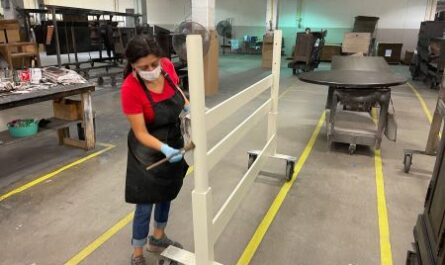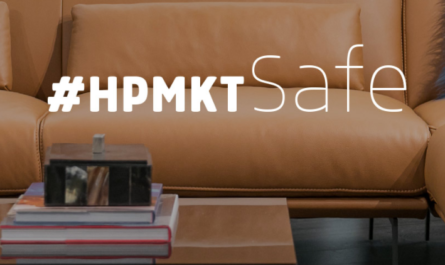A news item published by Bloomberg tells us all we need to know about the supposed container shortage on the world’s oceans, a pirate problem causing U.S. furniture importers to crash the spot market for stopgap shipping solutions.
The spot market is the global trade equivalent of seeking out a loan shark to tide you over until your next paycheck; it is merciless, expensive and simply not a sustainable financing strategy.
The Bloomberg report has A.P. Moller-Maersk warning that the world’s supply lines have and will continue to be more disrupted by congestion in the Red Sea than has been previously acknowledged. Out of the other side of its sizable mouth, the shipping giant raised its profit outlook. This is the difference between, on the one hand, container carriers and oil companies and, on the other, businesses that have to rely on persuasion to win the customer’s hard-earned disposable dollar. The message? “You need us, so suck it.”
The Danish company cited the now 6-month-old problem of Houthi “pirates” for the decline in container capacity, which in the world of shipping means ever-higher prices to secure a diminishing resource. Supply is reportedly down; prices are way, way up. Spot rates for full-size containers coming here from Asia are north of $6,000 for a 40-foot unit or its equivalent, according to the Drewry World Container Index. That’s three times the rate as recently as December. Editor’s Note: Industry sources have told Home News Now that they are paying as high as $10,000.
The Maersk announcement, which predicted “strong” demand for its containers for the foreseeable future, also cited what the company calls Red Sea “ripple effects” for the declines in capacity. These effects include bottlenecks at some of Asia’s biggest ports and major customers’ willingness to pay big up front to secure shipping capacity for the all-important holiday selling season.
What the announcement doesn’t mention are the ripple effects of the ripple effects. Another news item, this one from the South China Morning Post, warns that shipping costs even from the interior of the country also are on the rise because of traffic jams on the Yangtze River, Asia’s longest waterway and the functional equivalent to the Mississippi River. The cause of the choke points also is a decline in capacity, increasing wait times and delays. The ripple effects of the ripple effects, therefore, are the difficulties getting raw materials and even fuel into the country in order for goods to flow back out of the country. These delays inevitably affect the international trade routes, as well.
Vietnam v. China
Meanwhile, over in Vietnam, there is more than deep concern. You can go ahead and call it alarm.
Higher shipping costs and increasing delays trigger contract penalties and threaten already thin margins, putting billions of dollars at risk, according to Vietnamese state media. And at least from the view of Vietnamese logistics experts, this is a situation that shows no signs of improving any time soon.
For these experts, add to the Red Sea disruptions the escalating tensions between the United States and China and the recent round of tariffs on Chinese goods levied by the Biden administration. The run-up to these tariffs that take effect in August has spurred U.S. importers and Chinese exporters alike to expedite shipments before that deadline. This puts many if not most Vietnamese exporters at a competitive disadvantage.
Chinese companies can pay up to $1,000 to secure a shipping slot, whereas Vietnamese companies can only offer perhaps $600, according to the Vietnam Ship Agents, Brokers and Maritime Services Providers Association. Add to this the fluidity of pricing from the container carriers. Typically, rates are good for 15 days to a month; in today’s environment, they can change daily. And sea freight rates for Vietnamese producers to ship to the U.S. have reportedly doubled this year already.
Danish danger
As inflation at least loosens its grip, the container carriers seemingly couldn’t care less. They are proving yet again that they will seek maximum profits even as their customers buckle and break under yet another sustained period of uncertainty with respect to supply chains. The revised profit outlook from Maersk is the second this month.
The Red Sea-caused re-routes are “expected to contribute to a stronger financial performance in the second half of 2024,” according to Maersk’s self-serving statement. Stronger for the carriers. Not mentioned? The weaker financial performance presumably for nearly all of its customers.
For those scoring at home, Maersk revised its profit outlook to $7 billion to $9 billion this year over the previous estimate of $4 billion to $6 billion, or a nearly 30% to 50% markup. Are you kidding me? Of course, Maersk shares rose nearly 4% on the news of the revised forecast.
The Copenhagen-based company also stated that congestion will continue to cause disruptions in ports in Asia and the Middle East, which sets the company up nicely for yet another revised outlook and yet higher quoted rates in the near future. Maybe tomorrow.
La La Land
A quick check on some of the bigger ports finds congestion at all of them, including Singapore, Ningbo, Shanghai and Qingdao. The Port of Los Angeles, the busiest port in the country, remains above the pre-pandemic peak, according to Bloomberg.
Returning to Drewry’s data, the cost of a 40-footer to L.A. from Shanghai saw six straight weeks of price increases, including a nearly 1% hike two weeks ago to bump the container cost to $6,025. That’s a tick better than Shanghai-to-Rotterdam, which increased 2.4% to $6,200, the highest that route has been since September 2022 coming out of the pandemic.
The routes hardest hit? Shanghai to Genoa, Italy, now at $6,900, or 3% higher than the first of the month and also the highest since September 2022, according to Drewry.
As reporting by HNN’s Tom Russell uncovered earlier this month, yet another disrupter is the lower average vessel speed, which has dipped to an average of 17 nautical miles per hour from a high of 24 knots, a drop of nearly a third, according to Statista.
The ships keep getting bigger and, therefore, heavier, turning an idiom into description: the slow boats from China.






Brian,
Bravo for pulling the veil off the shipping companies. Their quest for easy to get profits will eventually result in another inflation slap at consumers. They have the unique and unscrupulous ability to join the Red Sea pirates and the Houthi rebels as profiteers who have learned how to make more during troubled time!
Shame on them!
Martin is right on the money!! He gets it and I don’t understand why we in America tolerate it!
This is completely lazy and ridiculous commentary. I have no love for the carriers, but this is simple supply and demand finding equilibrium. If you had 1,000 customers that wanted to buy 50 chairs, would the market price be $50 or $500?
Well, that all depends, Jason. How much did it cost you to make the chair? Ship it? Stock it? Deliver it? Which price points historically has your pure supply-and-demand-based business model depended on or otherwise traded at or for? Was this a promotion? A loyalty program? Why did you only make 50? Etc., etc. So, I’m not sure which is more lazy or ridiculous — my “commentary” or your analogy. But, I’m grateful for readers, even those who disagree, and doubly grateful for those who take the time to comment.
Great article!!
It’s all “GREED”. GREED and more GREED!!!
These container companies know they got America by the balls and couldn’t care less because they know theirs nothing we can do about it.
Unless we bring back production to America I don’t see anything changing but only getting worse. Covid was the testing ground of the container companies to get together and raise prices. They came up with every excuse in the world and got away with it time and time again. I don’t have a fix but I know it will eventually put furniture retailers and manufacturers out of business because consumers won’t want to keep paying outrageous prices.